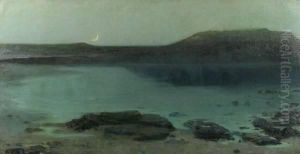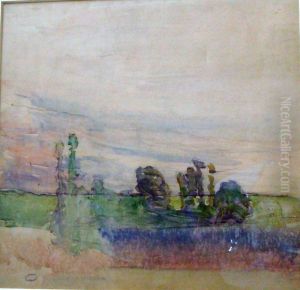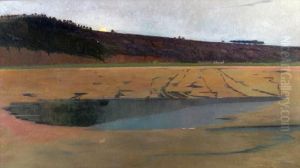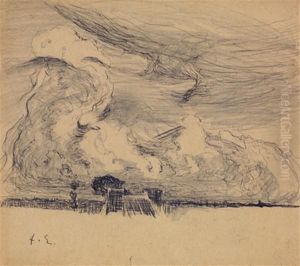Florence Este Paintings
Florence Este was an American artist and illustrator born in 1850 in Philadelphia, Pennsylvania. Este was notably a part of the late 19th-century and early 20th-century American art scene, contributing to both illustration and decorative arts during a time when the role of women in the professional art world was evolving. She was recognized for her watercolors, illustrations, and designs, particularly those that featured botanical and floral subjects.
Este received her artistic education from the Pennsylvania Academy of the Fine Arts, one of the leading art schools in the United States, where she honed her skills in drawing and painting. Her education at such a prestigious institution during that era was an accomplishment in itself, given that women had limited opportunities in professional art training.
Throughout her career, Florence Este exhibited her work at various venues, including the Pennsylvania Academy of the Fine Arts Annual Exhibition and the World's Columbian Exposition in Chicago in 1893. Her illustrations appeared in several periodicals and books, which was a popular avenue for artists to reach a broader audience at the time. Este's style was often characterized by delicate lines, a soft palette, and an attention to detail that was well suited to the intricate and ornamental aesthetics of the period.
In addition to her own artistic practice, Este also contributed to the arts through her role as an educator. She taught at the Philadelphia School of Design for Women, now known as Moore College of Art & Design, which was an important institution for educating female artists and designers. Este's involvement with the school reflects her commitment to supporting women in the arts, a legacy that aligns with the broader historical narrative of women's increasing participation in the art world during the late 19th and early 20th centuries.
Florence Este passed away in 1926, but her work remains part of the narrative of American art history, particularly in the context of women's contributions to the field. While she may not be as widely recognized as some of her contemporaries, her artistic output and role as an educator demonstrate her dedication to her craft and to the advancement of women artists during a pivotal time in history.



